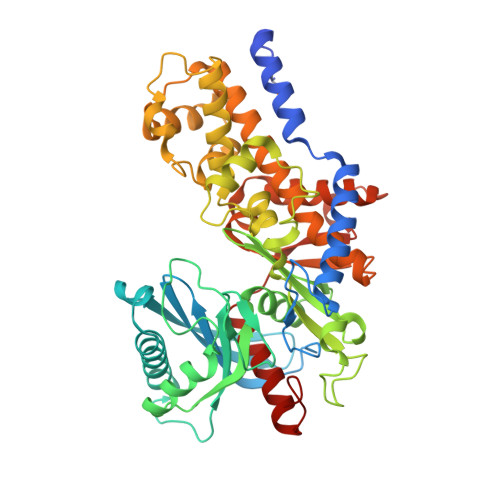In vivo phosphorylation and in vitro autophosphorylation-inactivation of Kluyveromyces lactis hexokinase KlHxk1.
Kettner, K., Kuettner, E.B., Otto, A., Lilie, H., Golbik, R.P., Strater, N., Kriegel, T.M.(2013) Biochem Biophys Res Commun 435: 313-318
- PubMed: 23583397
- DOI: https://doi.org/10.1016/j.bbrc.2013.03.121
- Primary Citation of Related Structures:
4JAX - PubMed Abstract:
The bifunctional hexokinase KlHxk1 is a key component of glucose-dependent signal transduction in Kluyveromyces lactis. KlHxk1 is phosphorylated in vivo and undergoes ATP-dependent autophosphorylation-inactivation in vitro. This study identifies serine-15 as the site of in vivo phosphorylation and serine-157 as the autophosphorylation-inactivation site. X-ray crystallography of the in vivo phosphorylated enzyme indicates the existence of a ring-shaped symmetrical homodimer carrying two phosphoserine-15 residues. In contrast, small-angle X-ray scattering and equilibrium sedimentation analyses reveal the existence of monomeric phosphoserine-15 KlHxk1 in solution. While phosphorylation at serine-15 and concomitant homodimer dissociation are likely to be involved in glucose signalling, mechanism and putative physiological significance of KlHxk1 inactivation by autophosphorylation at serine-157 remain to be established.
- Institute of Physiological Chemistry, Carl Gustav Carus Medical Faculty, Technische Universität Dresden, Dresden, Germany. karina.kettner@tu-dresden.de
Organizational Affiliation:



















